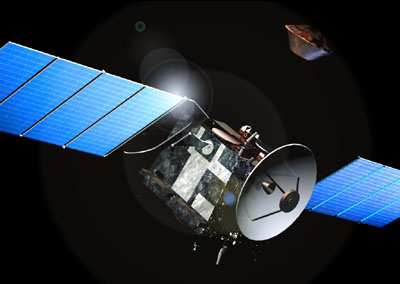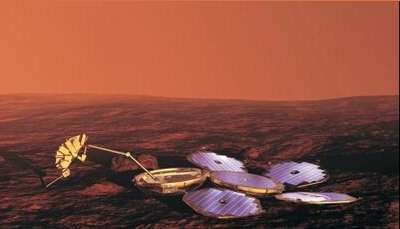Swiss Steps Up
 The European Space Agency (ESA)
–- which turned 30 on Tuesday -- has gone from launching
satellites into outer space to searching for life on Mars.
The European Space Agency (ESA)
–- which turned 30 on Tuesday -- has gone from launching
satellites into outer space to searching for life on Mars.
The Paris-based ESA sent its first satellite into orbit in 1975
and over the past three decades has made it its mission to develop
and coordinate space programmes in Europe.
The agency has had its share of successes and failures over the
past 30 years. Its first significant milestone was the launch of
the first Ariane rocket in 1979.
One of the ESA’s most high-profile setbacks in recent
years was its bungled unmanned mission to Mars.
The Beagle 2 probe, which had been expected to land on the
surface of the red planet, vanished without a trace in December
2003.
Success Story?
But Marc Bertschi, director of the Swiss Space Office (SSO),
says the successes over the past three decades far outweigh the
disappointments.
"We should realize today that a number of things we take for
granted in daily life depend on space systems," he told Swissinfo.
"Meteorology and telecommunications, for example, would be
unthinkable without satellites."
Bertschi adds that Switzerland has succeeded in establishing a
reputation for itself within the ESA as an important source of
scientific expertise.
"The scientific presence of Switzerland within the ESA’s
programmes by far exceeds the [amount of money] the country
contributes to the agency.
"We are one of the smaller member states but still have an
important role to play."

Swiss Challenge
Bertschi took charge of the SSO just over two months ago. Prior
to his appointment he was head of ESA Director-General Jean-Jacques
Dordain’s policy office.
He expresses concern that Switzerland could lose out in the
field of space research as the ESA and European Union – of
which the country is not a member – move closer together.
"Sometimes it is difficult to make other delegations understand
that we do not want to lose out as the relationship between the ESA
and the EU evolves," he said.
Around 800 people in Switzerland are directly involved in the
space industry, but this number rises to as many as 3,000 if
companies which win sub-contracts to work on space projects are
taken into account.
The SSO has in the past called on the government to increase
Switzerland’s contribution to European space research.
Bertschi rejects any suggestion that space research, including
projects like the International Space Station, is a waste of
money.
"You know who spends the most on space research in the world?
It’s not the ESA or Nasa, but the United States Air Force,"
he said. "I think this is a clear sign that space is important for
national security."
Where Now?
As the ESA marks its first three decades, Bertschi believes many
challenges still lie ahead for European space researchers.
"The rise in the number of space systems being developed for
defense and security is a general trend which is unlikely to slow
down as China emerges as a major world power," he said.
"But the future of manned space flights is very much open
– in particular the speed with which we get humans back to
the moon and then on to Mars."

The botched Beagle 2 mission does not mean the ESA has abandoned
attempts to search for life on other planets.
Last month the agency confirmed its intention to make another
attempt to land on Mars.
If plans for the mission are successful, a roving robot will
leave Earth in June 2011 and touch down on the planet two years
later.
 Airbus Racer Helicopter Demonstrator First Flight Part of Clean Sky 2 Initiative
Airbus Racer Helicopter Demonstrator First Flight Part of Clean Sky 2 Initiative Diamond's Electric DA40 Finds Fans at Dübendorf
Diamond's Electric DA40 Finds Fans at Dübendorf ANN's Daily Aero-Term (04.23.24): Line Up And Wait (LUAW)
ANN's Daily Aero-Term (04.23.24): Line Up And Wait (LUAW) NTSB Final Report: Extra Flugzeugbau GMBH EA300/L
NTSB Final Report: Extra Flugzeugbau GMBH EA300/L Classic Aero-TV: 'Never Give Up' - Advice From Two of FedEx's Female Captains
Classic Aero-TV: 'Never Give Up' - Advice From Two of FedEx's Female Captains





